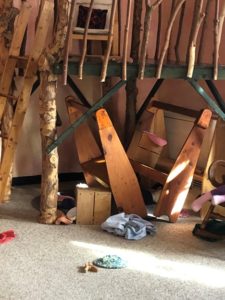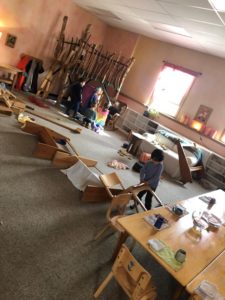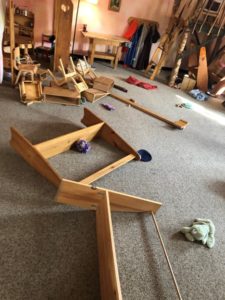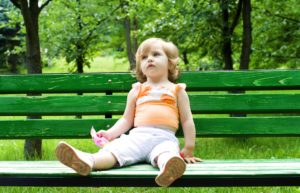Grief. It’s as much a part of us as blood and bones. We humans are grievers to the core. We love and cherish, and we lose what we love and cherish – through death, divorce, conflict, illness, injury, trauma, financial woes, loss of home or homeland… Even so, few of us make it to adulthood with more than a vague idea about how to heal our grief-related pain or help our children to heal theirs.
Myths and misunderstandings about grief abound. We often attempt to organize grief to control the chaos of our pain. We prescribe stages or phases of grief (that don’t exist), and limit the grieving period to 3 months, 6 months, a year… We say that time heals grief, and sometimes it may. But a grief-striking loss may be so disruptive to life as we know it that we carry grief within us for the rest of our days. Even in good times, grief may simmer just beneath the surface of our consciousness.
Fortunately, from birth to death, we humans gain monumental capacities for healing grief. Babies, toddlers, and children have massive potential as healers of their own grief-related pain. Grief isn’t something we can protect children from, nor can we heal the grief that ails them. Healing grief is something a child learns to do for themselves. So, as intimate caregivers, the best we can do is to create environments for our children in which they become their own best healers. But first, we have to know a little something about grief and grieving, so we understand how the nurturing environments we create help a child to heal.
The Ins and Outs of Grief
Grief researchers have discovered a lot about grief over the past 80 years, but most of this knowledge never finds its way to everyday grievers like you and me. Nor are these findings presented in practical ways that we can put to good use. Years ago, when a storm of grief-related losses descended on my family, I decided to take what the academics know about grief and transform that knowledge into a useful compass for grievers, called the Model of Adaptive Grieving. My model includes four types of grieving responses that are universal to grievers of all ages but experienced and expressed differently by each of us:
- Lamenting: experiencing and expressing grief-related pain, distress, and disheartenment.
- Heartening: experiencing and expressing what is comforting, uplifting, or (even, surprisingly) pleasurable within the grieving process.
- Integrating: Attending to life-shifting changes brought on by a grief-striking loss and incorporating these changes into everyday life.
- Tempering: Taking a break from grief – that is, suppressing grief-related suffering, or avoiding grief-related changes and realities that distress or overwhelm a griever physically, emotionally, mentally, or spiritually.
Until recent decades, lamenting was supposed to be all there is to healing grief. We were told by many well-meaning therapists and grief counselors that if we did “our grief work” by talking about our grief with someone, we would naturally move through the pain of grief to “recovery.” But our human psyches are not as one-dimensional as that and grief is not a one-dimensional human emotion. What’s more, talking about grief-related pain isn’t the only way to heal it.
Think about your own experiences with grief. Which of these four grieving responses – lamenting, heartening, integrating, and tempering – do you consider to be the most effective to help ease, heal, and tolerate the suffering of grief?
You may have strong opinions about the best path to healing for you or a child in your care. Whichever path you choose, you’re not wrong. Each type of grieving response has the potential to help ease grief-related pain. But if you set up camp in any one type of grieving response, it can also do as much harm as good. The key to holistic and continual healing is engaging in all four grieving responses in doses that are right for you, and collectively for your care communities (at home, school, or daycare).
Creating Healing Environments for the Grieving Infant
Providing a healing environment for an infant requires healing yourself. Infants experience their sense of selfhood through those they depend upon for life, literally absorbing the emotional, psychological, and social content within a caregiver’s being. Colwyn Trevarthan, professor of Child Psychology and Psychobiology, writes:
“The Self (of the infant) is looking for the vital will and imagination of the Other… A new-born may imitate expressions of an adult’s motives and emotions within minutes of birth.”
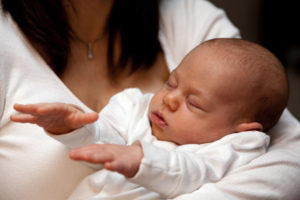 We may be able to hide grief from everyone else, but we can’t hide from the babies and toddlers in our lives. From an infant’s perspective, your body is their body, your heart is their heart, your mind is their mind. So, as you provide infant care when you’re grieving, find ways to engage in each type of grieving response in doses that are rejuvenating and don’t overwhelm you with your pain.
We may be able to hide grief from everyone else, but we can’t hide from the babies and toddlers in our lives. From an infant’s perspective, your body is their body, your heart is their heart, your mind is their mind. So, as you provide infant care when you’re grieving, find ways to engage in each type of grieving response in doses that are rejuvenating and don’t overwhelm you with your pain.
Contemplate how you might heal yourself in the act of providing care for an infant. For example, if singing, reading, walking, time in nature, or reciting poetry is healing for you, make it a mainstay of your care-providing rhythms as you lament, hearten, integrate, and temper your way to healing through modes of grieving that serve you best. Create interludes of self-care throughout the day by taking advantage of nap times, quiet times, and (whenever possible) caregiving partnerships with others.
 An infant’s empathic nature can be a great motivator for intimate caregivers to carve out time, space, and intention to grieve and heal extravagantly. If you won’t make the effort for your own sake, then do it for an infant in your care, because when you’re special to an infant, you can’t keep your grief from them. Your grief is their grief. Your grieving is their grieving. Your healing is their healing.
An infant’s empathic nature can be a great motivator for intimate caregivers to carve out time, space, and intention to grieve and heal extravagantly. If you won’t make the effort for your own sake, then do it for an infant in your care, because when you’re special to an infant, you can’t keep your grief from them. Your grief is their grief. Your grieving is their grieving. Your healing is their healing.
Creating Healing Environments for the Grieving Child
As an infant grows into childhood, their healing is not as dependent upon you. No doubt, a child will continue to benefit from an intimate caregiver’s healing presence, but a child can increasingly ease, heal, and tolerate their own grief-related pain in a home, daycare, or school environment that fosters imagination, presence, and active engagement. Consider the healing inspiration a child might receive from an environment that includes:
- Familiar daily rhythms & domestic rituals: When a child is facing undesirable changes, maintaining or creating rhythms and simple daily rituals of connection and encouragement can go a long way: a regular mealtime, nap or bedtime blessing, song or verse of greeting or parting, etc. Amid loss and change such rhythms and rituals bring comfort to a child and deepen intimacy with care providers.

- Time & Space to Daydream: Daydreaming can be a private means of grieving without interruption or influence by others. It may be a child’s way of integrating memories from a loss experience, clarifying questions, or diverting their thoughts from their suffering by engaging in pleasurable fantasies or dwelling on happier times. Daydreaming can also be a source of empowerment and hope as a child imagines better circumstances in the future or a wished-for resolution that might provide healing. Interludes of daydreaming can serve as a soothing balm that heals a child from within.
- A Child Taking Charge: Engaging in activities that a child can control may help the child to overcome fears, transform a sense of powerlessness, and seek diversion from their pain – for example:
- Role-playing: Give hospitalized or bedridden children an opportunity to role-play being the “doctor” who is caring for the doctor, nurse, or another caregiver; it can help everyone see a child’s illness or injury from a different perspective.
- Shopping Around: Invite a child who is poverty-stricken or the victim of a house fire or natural disaster to go shopping at a food or clothing bank, or at a private “store” set up by friends or neighbors to inspire the child with a needed sense of abundance. Likewise, a child might be given a list of needed items (food, clothing, school supplies, games, or toys) to buy and a gift card to shop at a local grocery, retail, or thrift store.
- Making it Happen: Invite a child to help plan or participate in a ceremony of healing – for example, creating a memorial celebration for a deceased or dying family member, pet, or cherished toy that is beyond repair, or offering a healing blessing to someone who is ill or injured. Such opportunities empower a child to “do something” about a loss and serve as a healer for others.
- Let a Child Talk: Some children process grief by talking about it in the presence of a caregiver, doll, toy, pet, real or imaginary playmate, stranger, or acquaintance, or by talking alone in private moments. A child may engage you as an active listener or may “talk it out” to no one in particular. If a child invites you to listen, be an encouraging presence, empathize, and if it seems helpful, reflect aloud what you see and hear – perhaps, “It sounds like you really miss grandpa,” “If you need a hug, I’m right here,” “It hurt your feelings when the kids yelled “loser” to you after the contest,” or “It can be sad and scary to see your mom at the hospital looking so sick.”
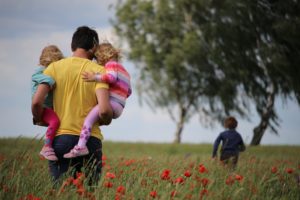 Offer plenty of opportunities to engage in free play. During expanses of free play, a child engages in the grieving and healing process as an adult might accomplish through grief counseling, journaling, creating a memorial, or participating in a religious ceremony. A child’s playful meanderings can tell you a great deal about the child’s grieving and healing process, even if the message is simply that the child needs a break from focusing on the pain and suffering of grief.
Offer plenty of opportunities to engage in free play. During expanses of free play, a child engages in the grieving and healing process as an adult might accomplish through grief counseling, journaling, creating a memorial, or participating in a religious ceremony. A child’s playful meanderings can tell you a great deal about the child’s grieving and healing process, even if the message is simply that the child needs a break from focusing on the pain and suffering of grief.
Although you may prefer to grieve and heal without getting your knees and elbows dirty, it’s crucial to provide grieving children with the time, space, and opportunity to move with their grief – to jump, run, and saunter in and out of the mud and muck of it. So, next time you want to grieve and heal alongside a child in your life, put on your play clothes and don’t worry about the mess.
© 2022 by Shea Darian. Portions of this article are excerpted from Doing Grief in Real Life: A Soulful Guide to Navigate Loss, Death & Change by Shea Darian
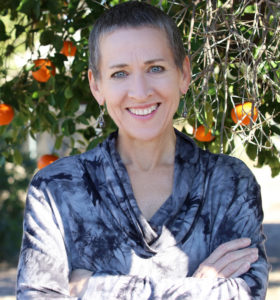 Shea Darian is the author of Seven Times the Sun: Guiding Your Child Through the Rhythms of the Day. Shea is an award-winning author, family and grief educator, spiritual director, and hospital chaplain. Shea’s newest book, Doing Grief in Real Life: A Soulful Guide to Navigate Loss, Death & Change (2022) recently won an IPPY award in Psychology/Mental Health. Shea’s other books include Living Passages for the Whole Family (Nautilus Book Award) and Sanctuaries of Childhood: Nurturing a Child’s Spiritual Life (Foreword Book of the Year Award) Shea lives in Sun City, AZ with her spouse, Andrew, who is Pedagogical Director at Desert Marigold School in Phoenix, AZ. Visit Shea’s website at DoingGrief.com
Shea Darian is the author of Seven Times the Sun: Guiding Your Child Through the Rhythms of the Day. Shea is an award-winning author, family and grief educator, spiritual director, and hospital chaplain. Shea’s newest book, Doing Grief in Real Life: A Soulful Guide to Navigate Loss, Death & Change (2022) recently won an IPPY award in Psychology/Mental Health. Shea’s other books include Living Passages for the Whole Family (Nautilus Book Award) and Sanctuaries of Childhood: Nurturing a Child’s Spiritual Life (Foreword Book of the Year Award) Shea lives in Sun City, AZ with her spouse, Andrew, who is Pedagogical Director at Desert Marigold School in Phoenix, AZ. Visit Shea’s website at DoingGrief.com
EDITOR’S NOTE:
Shea’s article reminded of a child in the kindergarten where I was an assistant. The lead teacher, a seasoned professional who had a deep and compassionate way with the children, was an inspiration to observe as she intuitively met the children’s needs. In the fall of that year our area experienced a string of tornados that ripped through neighborhoods near the school. One little 4-year-old boy in our kindergarten experienced the tornado in a profound and traumatic way. His father was traveling home from the store when the tornado hit the family’s home where the boy and his mother were sheltering. The father was on his cell phone driving and trying to get home to his family. The boy’s mother was on the home phone, until they lost power, and guarded the boy to keep him safe in the basement while the winds howled outside and the sounds of trees cracking, and glass smashing raged in the level above them. Their fear was heightened because their family was apart during this time. The father was just behind the tornado’s path and he found the road to his home blocked with debris as he was arriving as the storm was moving on. Their home suffered severe damage and the boy’s play spaces outdoors were ruined by winds and fallen trees. As you can imagine this experience was both traumatic and frightening and the little boy suffered deep grief at so much loss and destruction. When he returned to school, he was now very quiet and mostly kept to himself. He was easily overwhelmed and mostly played by himself. Over the weeks that followed the tornado, the school families joined to help with repairs and food and loved that family in so many ways. The boy slowly embarked on the road of healing. My lead teacher was so very patient, and she coached me to observe him and his unique coping skills. This little guy would “play tornado”, as he would later describe it. With great care he would lay down the play furniture and accessories of the play area in what appeared a chaotic order, but he carefully planned every item and its location. Once the room was “setup” he would put on a cape and run and turn and spin through the items and call to the other children, “let’s play tornado, it’s okay, we’ll be okay!” What a sight this was to observe! What a gift to see his healing taking place right before us!
